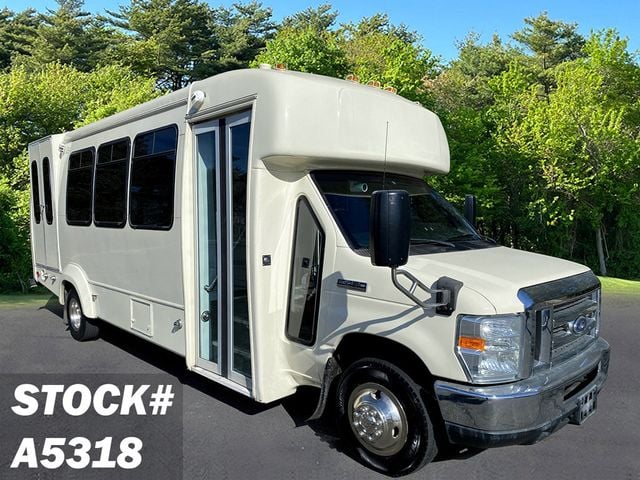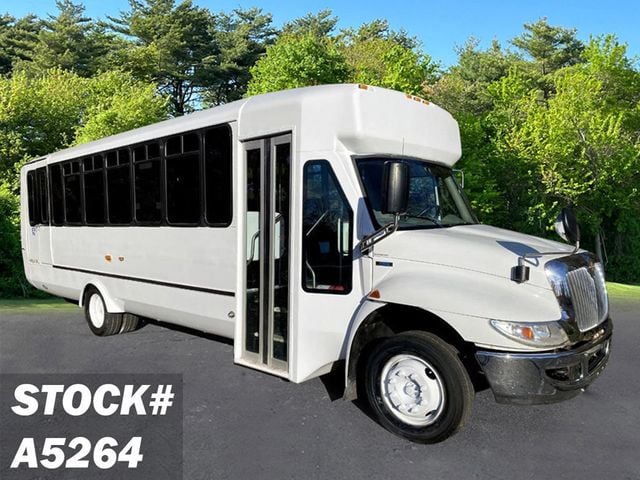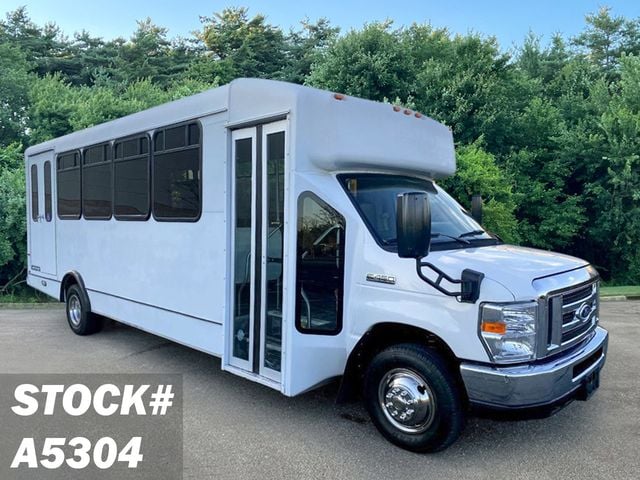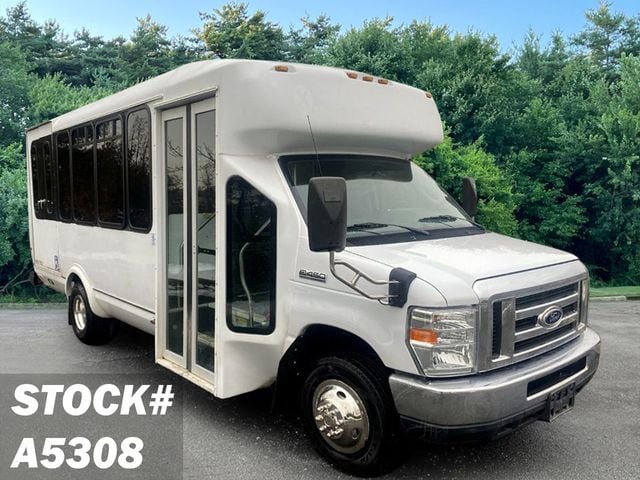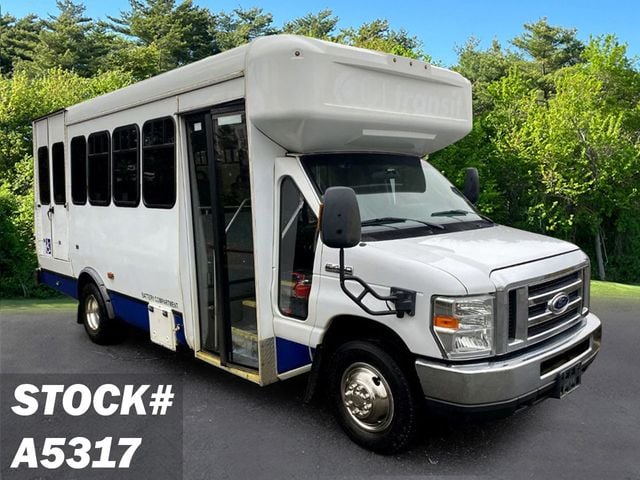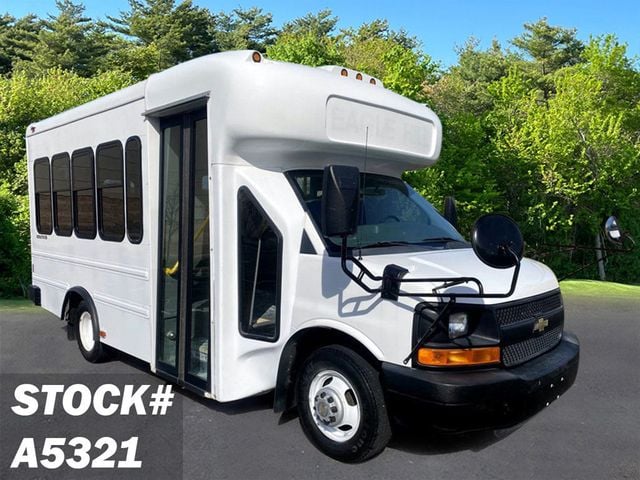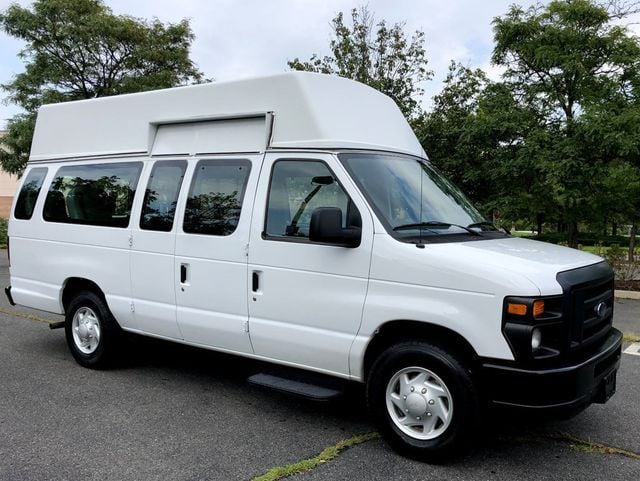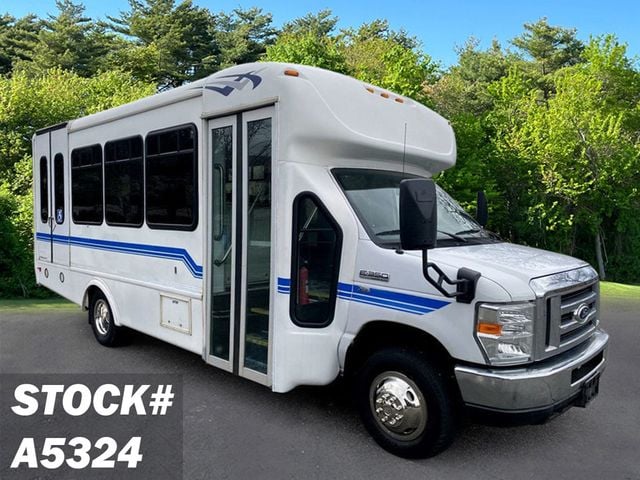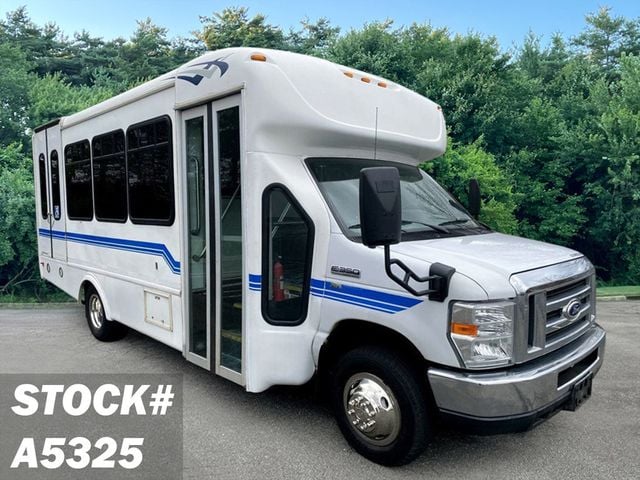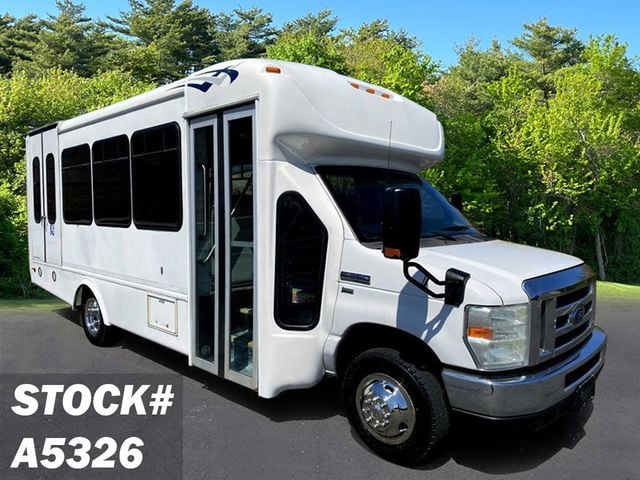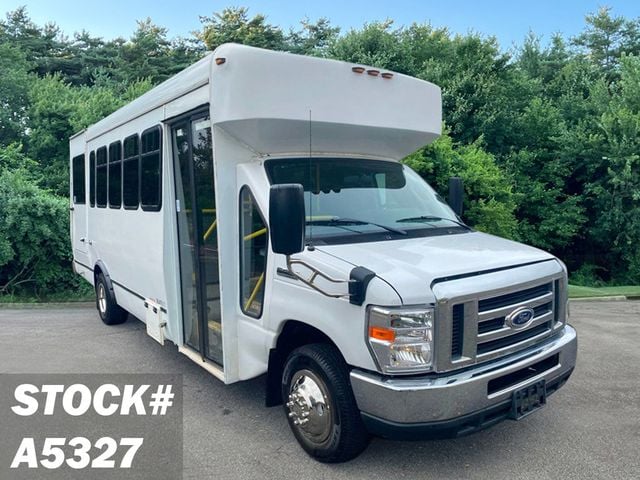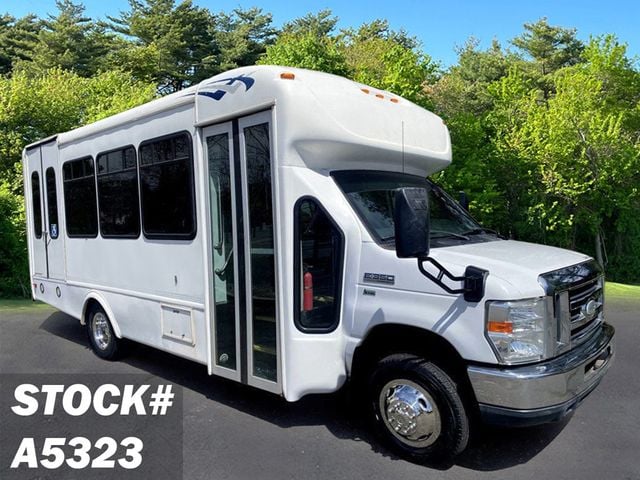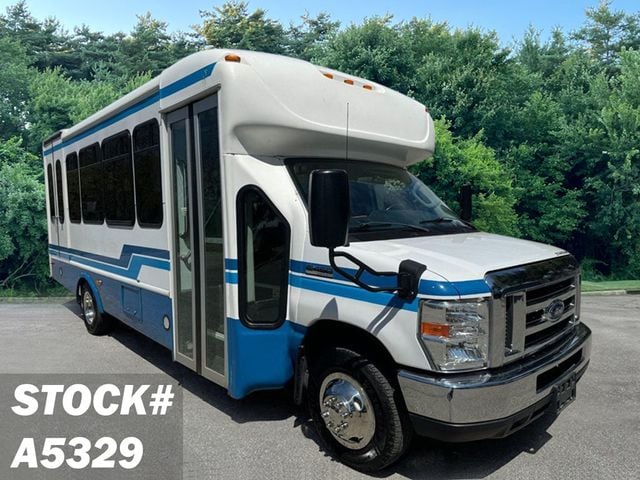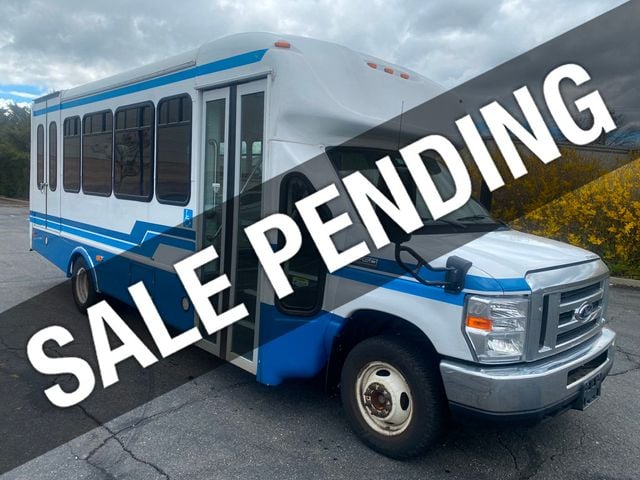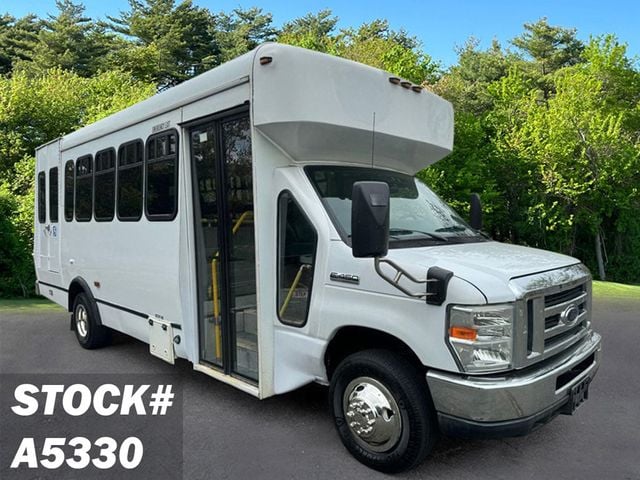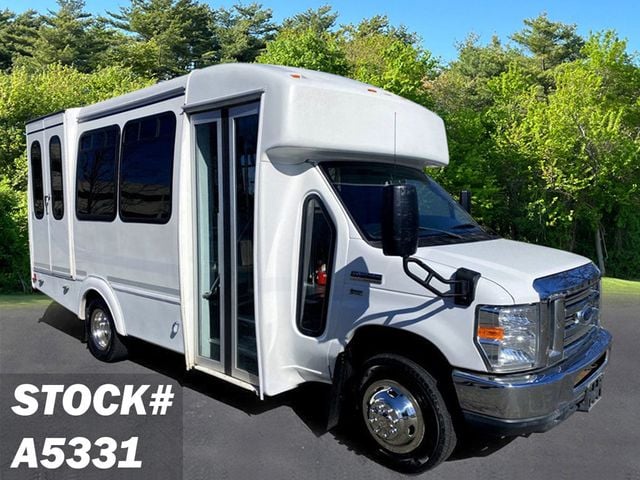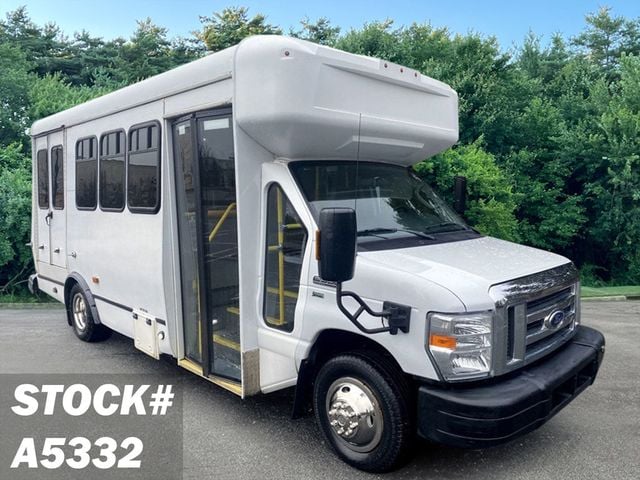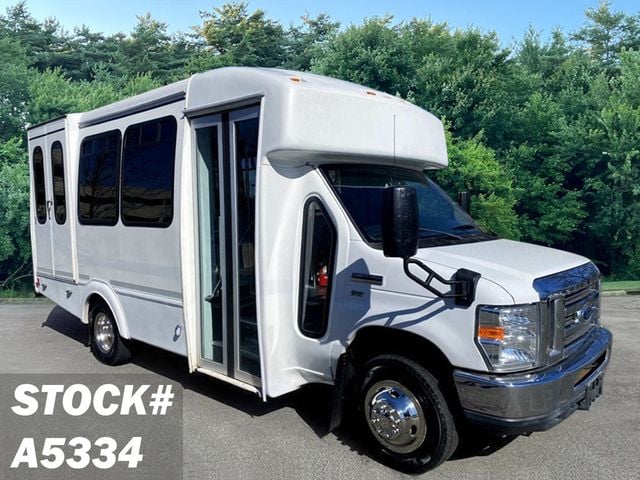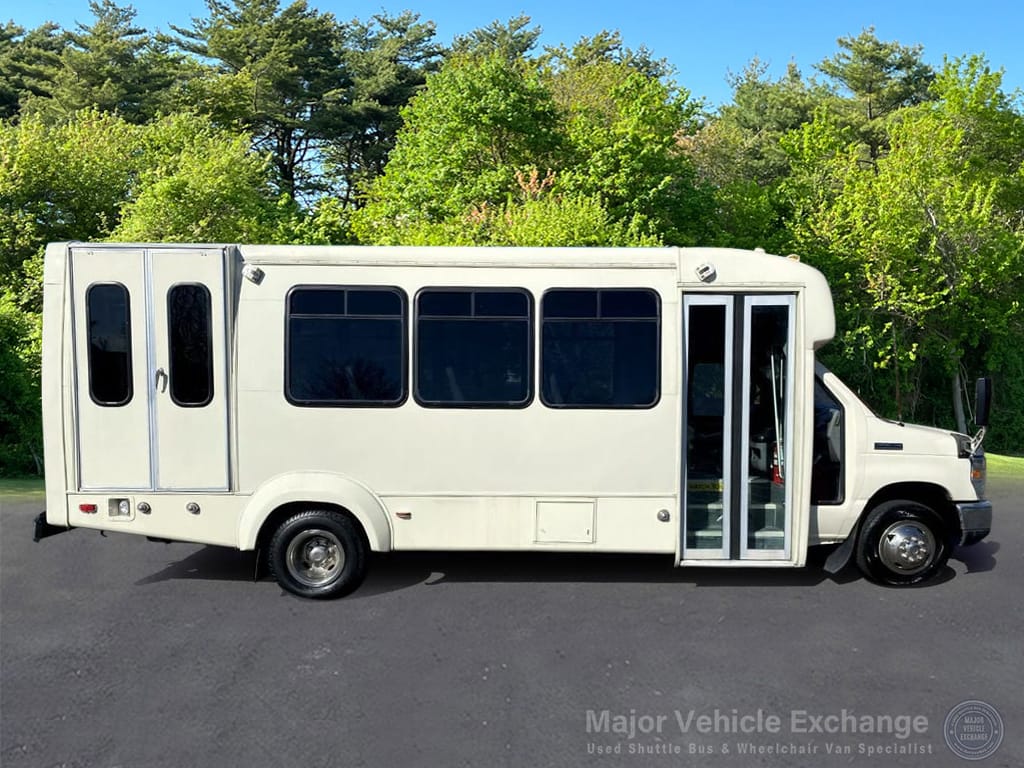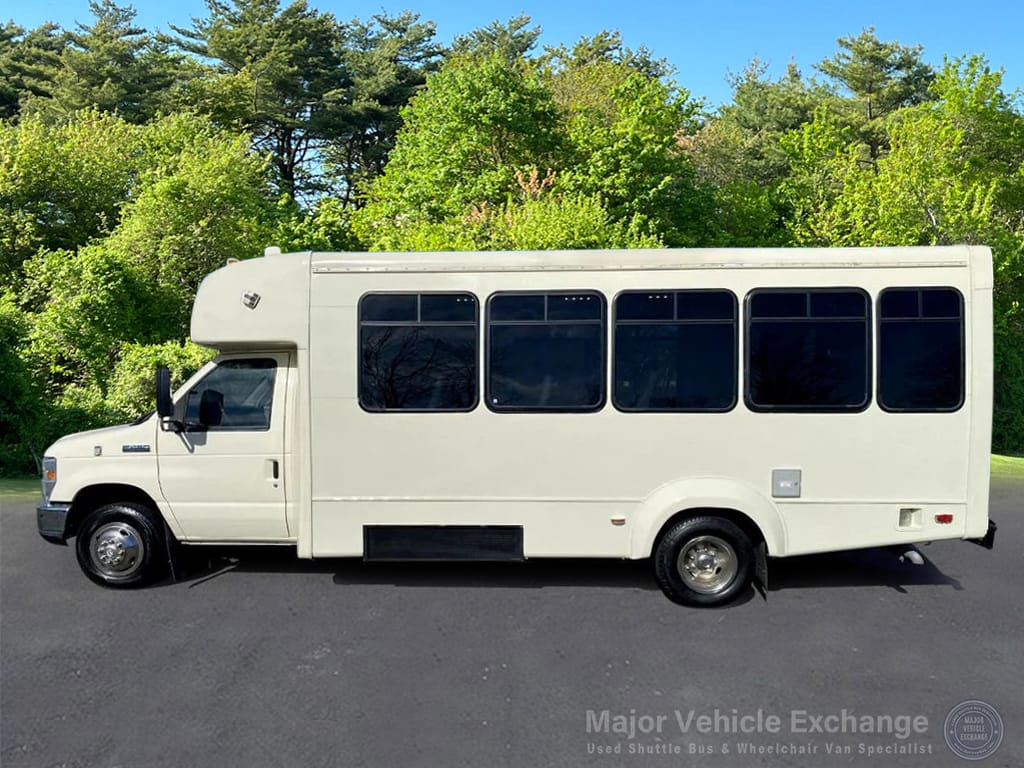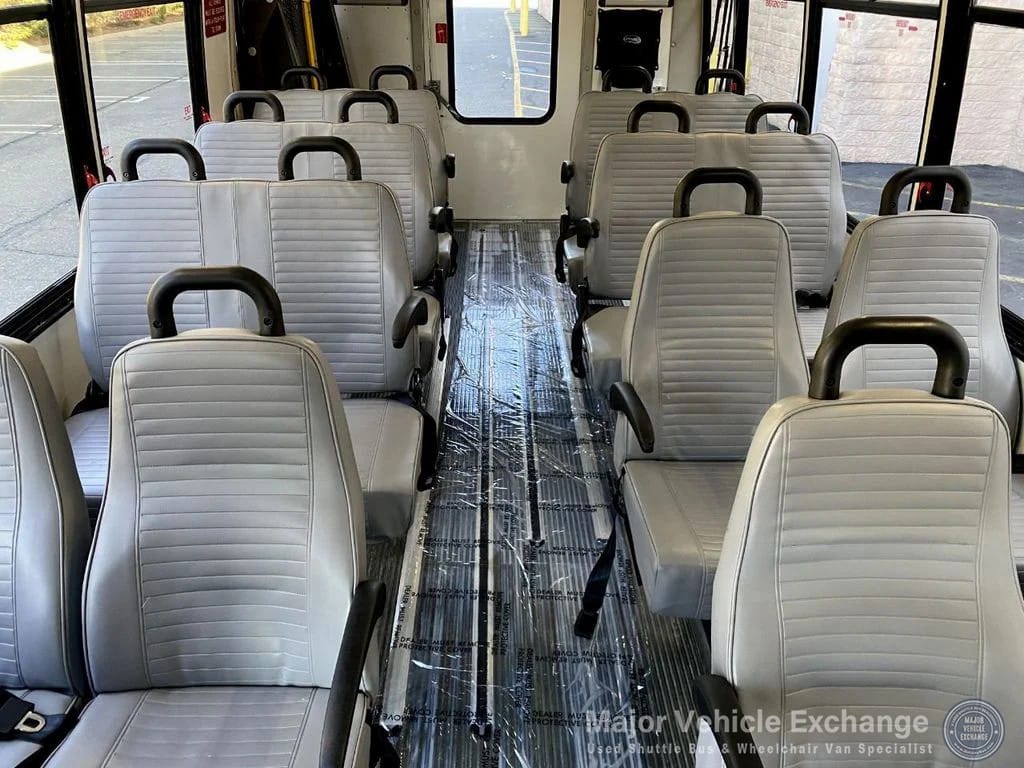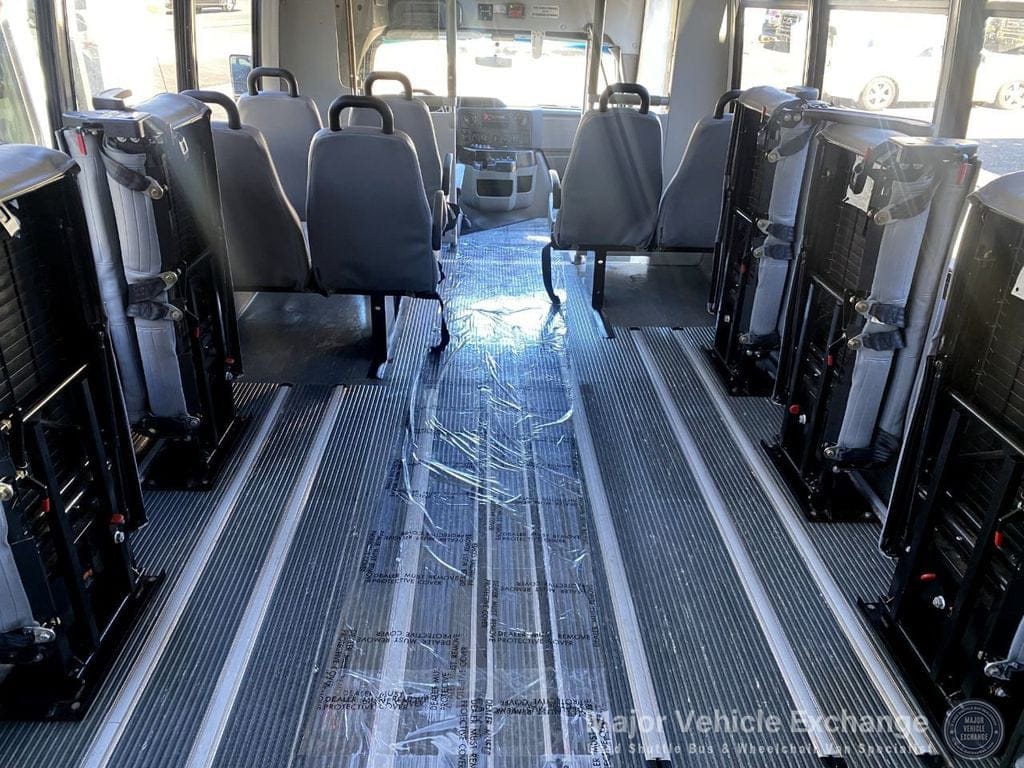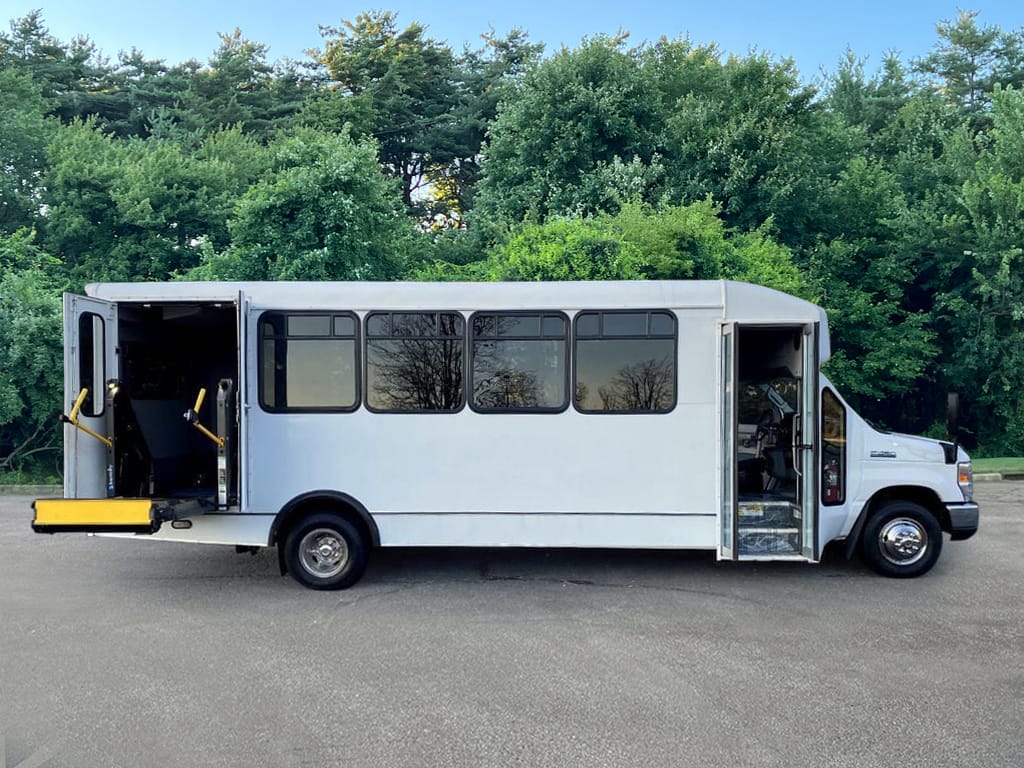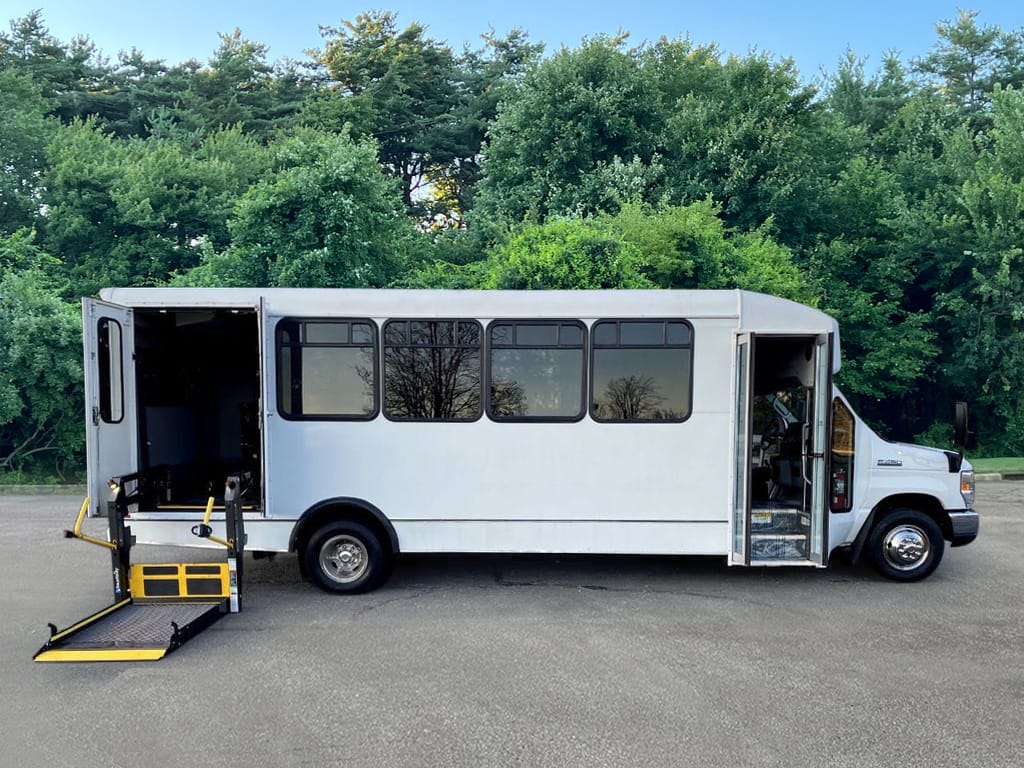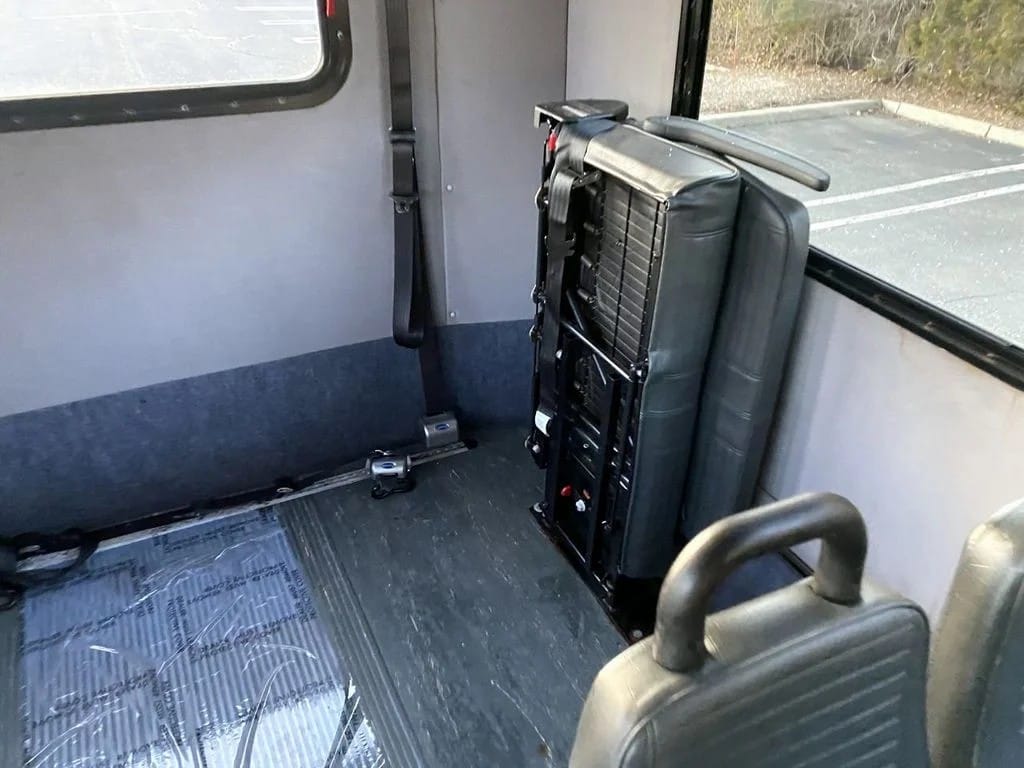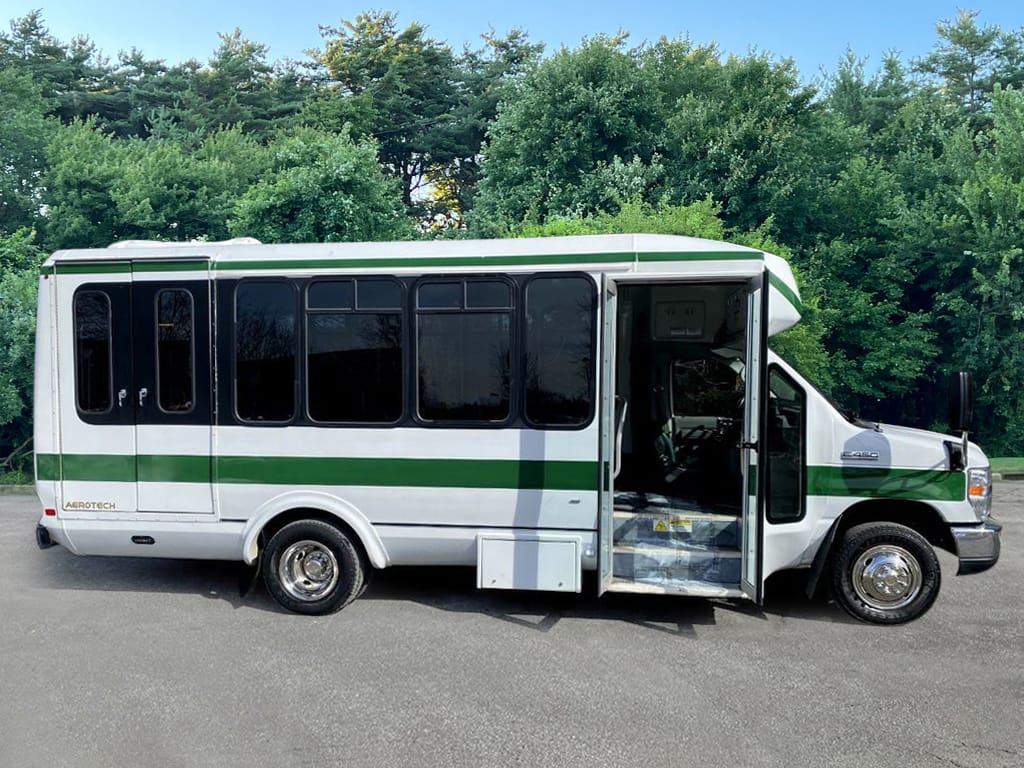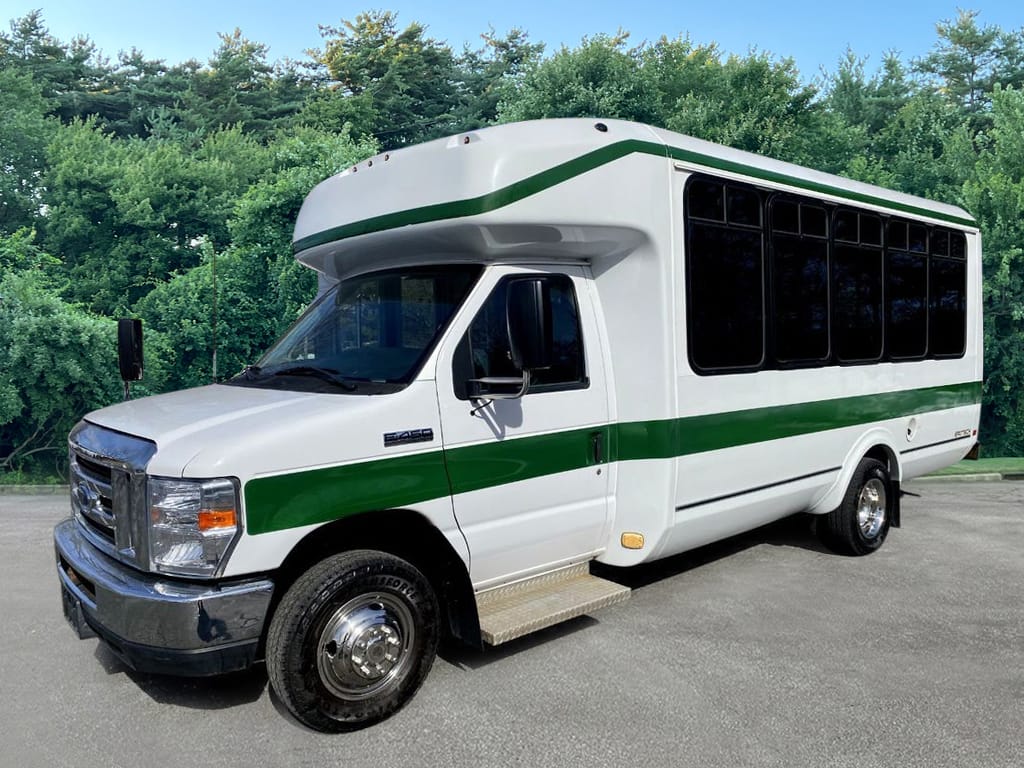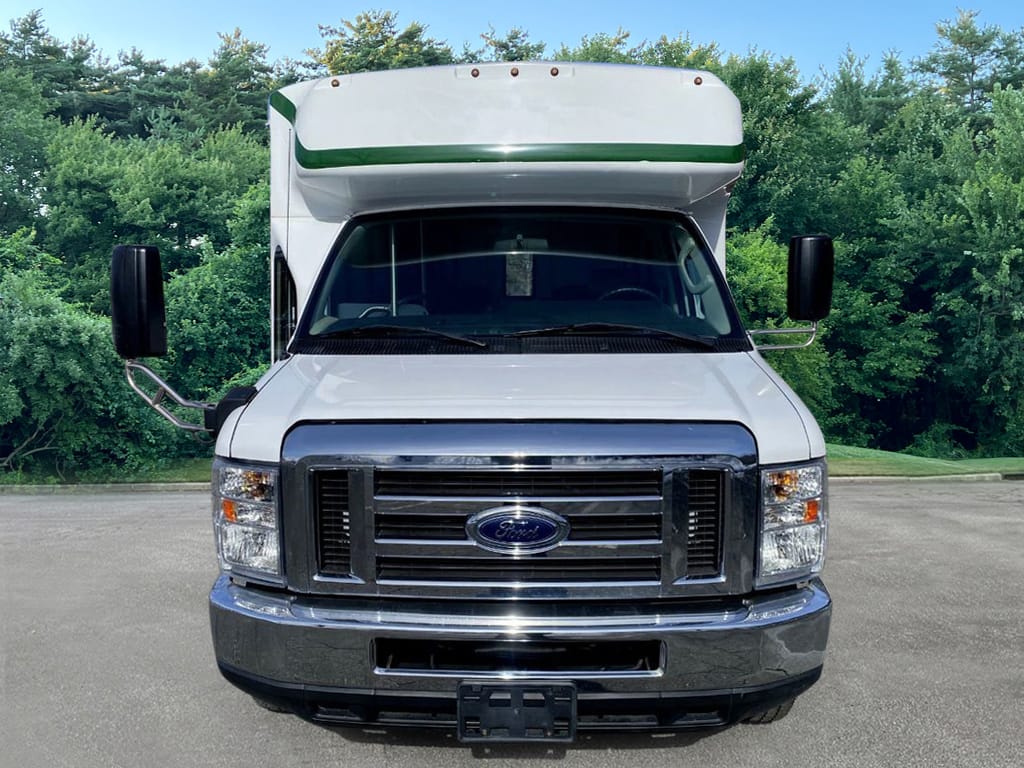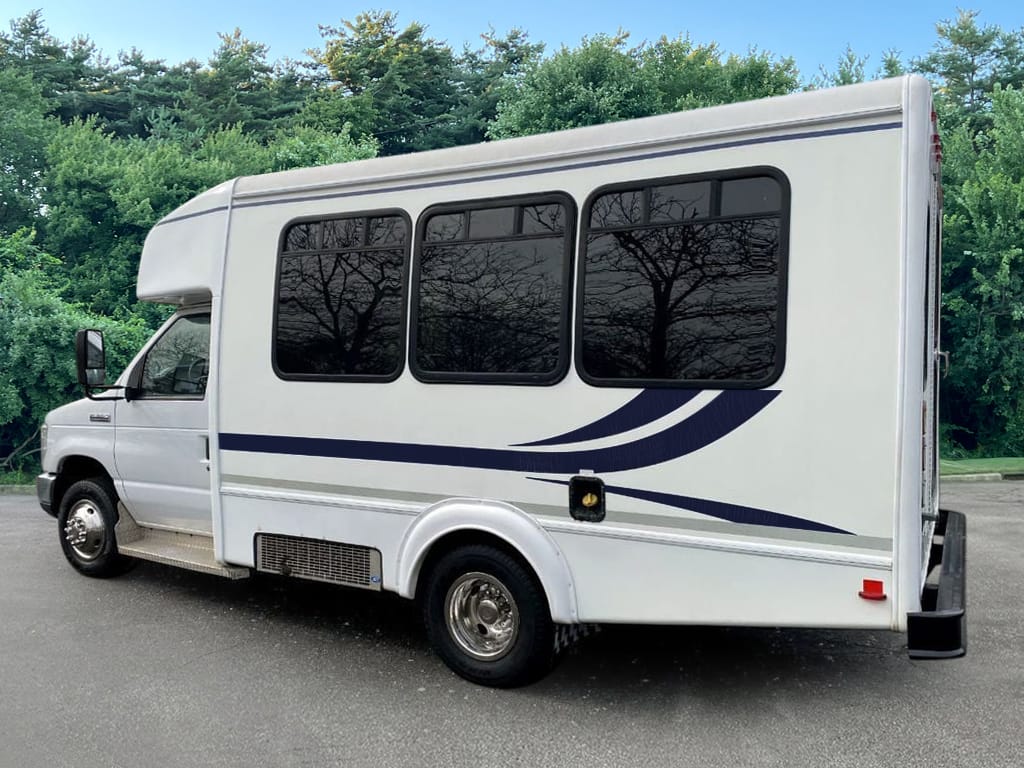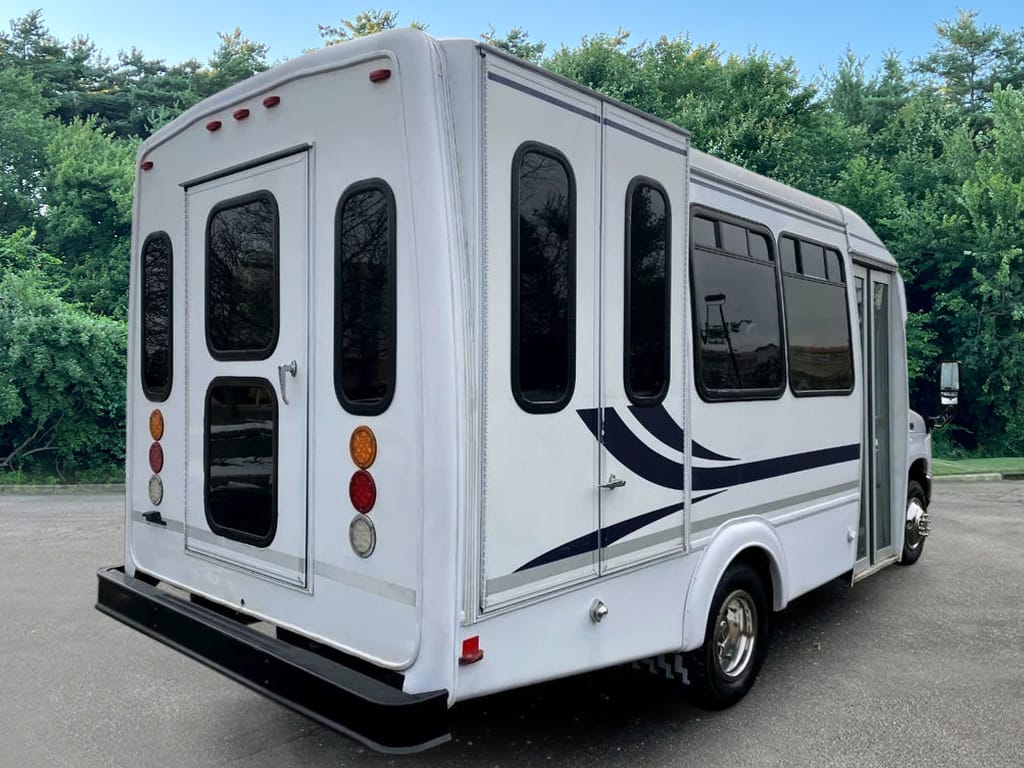Archive for the ‘Blog’ Category
Why a Used Shuttle Bus Might Be the Perfect Ride for You and your Passengers (According to a Licensed Dealer Like Major Vehicle Exchange)
Let’s face it, a new shuttle bus is a hefty investment – we’re talking upwards of $130,000!
But before you break the bank, consider the amazing value you can find on a gently used bus right here on our lot. Here’s the breakdown:
* Save Big Bucks: This is the biggest advantage, hands down. You can find a fantastic used shuttle bus, in excellent condition with moderate mileage, for a fraction of the price of a new one. We’re talking savings of 50% to 70%, which translates to a $25,000 to $50,000 purchase price staying comfortably in your budget!
* Looks Don’t Matter (Much): Unlike flashy cars, shuttle bus designs change slower than molasses in January. So, a well-maintained used bus will look just as sharp and professional as a brand-new one. Your passengers won’t be impressed by the year or the odometer, they’ll be impressed by a clean, comfortable ride.
* Maintenance Costs After Warranty: New buses usually come with a 3/36 warranty, but after that expires, guess what? Maintenance costs become pretty similar for both new and used buses, assuming the used one is in good shape.
* Save on Insurance and Financing: Who knew a used bus could be so budget-friendly? Insurance premiums are significantly lower for used buses compared to their shiny new counterparts. Plus, financing a used bus is easier on your wallet – both the down payment and monthly payments will be more manageable.
* Focus on What Matters: Most shuttle buses transport people for free – churches, towns, and service agencies rely on them. So, why spend extra on a new bus to impress passengers who likely won’t even care? Put those savings towards things that truly matter, like upgraded audio and visual features for your passengers.
* Fuel Efficiency? No Sweat: Fuel economy improvements in shuttle buses happen at a glacial pace as well. So, you won’t be sacrificing any efficiency by opting for a well-maintained used model.
Now, I’m not saying a new bus is never the answer. But for many buyers, a good quality used shuttle bus offers incredible value and can free up funds for other important aspects of your operation. Review our website, getanybus.com and let’s find the perfect, budget-friendly bus for your needs!
Taking the Ride: Your Guide to Entering the NEMT Business
The Non-Emergency Medical Transportation (NEMT) industry offers a fulfilling opportunity to provide a vital service to your community. Before you jump in, however, careful planning is essential for a smooth ride. This blog will guide you through the key elements you need to consider before embarking on your NEMT journey.
Planning Your Route: Business Plan & Market Research
Every successful trip starts with a map. In the NEMT business, your map is a well-defined business plan. This plan should outline your company’s goals, target audience, marketing strategy, and financial projections. Research your local market to identify potential clients like hospitals, assisted living facilities, and dialysis centers.
Choosing Your Ride: The Right Vehicle
Finding the perfect vehicle is crucial. Companies like Major Vehicle Exchange (getanybus.com) specialize in remarketing reconditioned used shuttle buses with wheelchair lifts, offering a cost-effective solution. Look for features like comfortable seating, ample storage, and easy accessibility for those with mobility challenges.
Fueling Your Journey: Financing & Resources
Purchasing a NEMT vehicle requires an upfront investment. Explore financing options or ensure you have the cash available before starting your business. Remember, additional costs like insurance, maintenance, and potential employee salaries will also factor in.
Finding Your Crew: Drivers with the Right Skills
Your drivers are the heart of your NEMT service. Look for individuals with a clean driving record, compassion, and a willingness to undergo NEMT-specific training. Prior experience in patient transportation is a plus, but a strong work ethic and a dedication to client care are essential.
The Open Road: Taking the Wheel
The NEMT business requires a spirit of independence and a commitment to building a successful company. If you have the drive and the passion for helping others, then this industry could be the perfect destination for you.
Ready to begin your NEMT adventure?
Do your research, secure financing, and find the right vehicle to get started. With careful planning and dedication, your NEMT business can provide a valuable service to your community and a rewarding experience for you.
What Does Reconditioning Mean for a Shuttle Bus?
Buying from the Pros: Licensed Dealers and Reconditioning
When you buy a reconditioned shuttle bus from a licensed dealer, you’re getting a bus that has gone through a rigorous process to ensure it’s safe, reliable, and ready to hit the road. Here’s a breakdown of what typically happens:
1. The Source: The dealer starts by acquiring the bus from reputable sources like auctions, private sellers, or fleet sellers. These sellers either provide a comprehensive report detailing the bus’s condition or allow for a thorough inspection.
2. Auction Verification: Auction houses take pride in presenting vehicles professionally. They verify the bus’s current condition and roadworthiness. If the bus isn’t drivable, the auction or a licensed repair shop will make it safe to drive before transport.
3. Pre-Reconditioning Check: The journey to the dealership begins with a driver checking crucial components like fluids, tires, lights, brakes, and running lights.
4. Dealership Inspection: Upon arrival, the dealership meticulously inspects the bus, noting any repairs or improvements needed.
5. Body Shop Magic: The bus gets transformed in the body shop, aiming for a near-perfect physical condition.
6. Cleanliness is Key: A thorough cleaning and undercoating ensure the bus looks presentable to potential buyers.
7. Top-to-Bottom Maintenance: The bus undergoes routine maintenance, fluid changes, and a comprehensive mechanical inspection. Professional technicians address all known issues, ensuring both the bus’s functionality and visual appeal.
Why Choose Reconditioned?
Buying a reconditioned shuttle bus from a licensed dealer offers several advantages:
* Peace of Mind: You know the bus has been thoroughly inspected and repaired by professionals, ensuring its safety and reliability.
* Transparency: Licensed dealers provide documentation of the reconditioning process, giving you confidence in your purchase.
* Variety of Options: Dealers typically have a wider selection of reconditioned buses compared to private sellers, allowing you to find the perfect fit for your needs.
* Inspection Options: Only a few dealers offer professional independent inspection options on reconditioned buses. An inspection by a licensed and trained provider offers buyers additional peace of mind for their investment.
So, the next time you’re looking for a used shuttle bus, remember: reconditioned from a licensed dealer is the way to go!
Every Sunday, a familiar scene unfolds: church parking lots overflowing, cars crisscrossing in search of a space, and parents anxiously wrangling kids for Sunday school. While a heartwarming testament to the community, this bustling chaos carries the hidden risk of traffic accidents and pedestrian mishaps. But what if there was a safer, more organized way to transport your congregation, especially vulnerable children? Enter the humble shuttle bus – a surprisingly powerful tool for enhancing physical and spiritual well-being.
Compared to carpooling in individual vehicles, shuttle buses offer a safety advantage on multiple fronts:
Reduced Crashes: According to the National Highway Traffic Safety Administration, buses are statistically 11 times safer than passenger cars. This is due to several factors, including larger size, stricter safety regulations, and professional drivers trained in defensive driving techniques. Fewer vehicles on the road also translate to smoother traffic flow, further minimizing collision risks.
Enhanced Pedestrian Safety: With designated stops and trained personnel managing passenger ingress and egress, shuttle buses eliminate the need for children and families to navigate busy parking lots, significantly reducing the risk of pedestrian accidents.
Improved Seatbelt Compliance: Unlike carpools, where seatbelt usage can be inconsistent, shuttle buses mandate their use for all passengers. This simple act reduces the likelihood of serious injuries in case of a collision.
Stress-Free Transportation: Parents can relax and focus on the spiritual journey instead of navigating traffic and parking, knowing their children are safely transported by professionals. This leads to a more positive and enjoyable experience for everyone, fostering a stronger sense of community.
Environmental Benefits: Opting for a single shuttle bus instead of multiple cars significantly reduces carbon emissions, aligning your environmental stewardship with your spiritual values. This sets a positive example for younger generations and promotes sustainability within the community.
But safety is only one piece of the puzzle. Shuttle buses offer additional benefits that strengthen the fabric of your congregation:
Building Fellowship: The shared ride experience fosters interaction and connection among members, promoting a sense of camaraderie and belonging. This is especially meaningful for children and newcomers who can make new friends and feel welcomed into the larger community.
Boosting Attendance: Convenient and reliable transportation can encourage participation, especially for families who might face challenges with carpooling or lack of personal vehicles. This enhances community engagement and strengthens the social bond within the congregation.
Streamlined Logistics: Coordinating multiple drivers and pick-up times can be a logistical nightmare. Using a shuttle bus system simplifies planning, reduces reliance on volunteers, and ensures on-time arrivals for services and activities.
Ultimately, choosing shuttle buses for church transportation is a decision rooted in love and responsibility. It demonstrates a commitment to the safety and well-being of your flock, fosters a sense of shared purpose, and contributes to a more sustainable future. So, ditch the carpool chaos and embrace the faith-fueled ride on the road to spiritual growth and community strengthening. Your congregation will thank you for it, and your peace of mind will be a true blessing.
Remember, choosing a safer transportation option isn’t just about avoiding accidents; it’s about building a stronger, more connected community around shared values. Let’s ride together towards a brighter, safer future, one shuttle bus at a time.
Shuttle buses and wheelchair vans are essential vehicles for providing accessible and convenient transportation to a wide range of individuals and groups Their versatility makes them ideal for a variety of uses, including:
* Mobile showrooms and offices: Shuttle buses can be converted into mobile showrooms or offices, providing a unique and engaging way to reach potential customers or clients. These vehicles can be equipped with displays, workstations, and other amenities to create a professional and inviting environment.
* Mobile recruiting centers: Shuttle buses can be used as mobile recruiting centers, allowing businesses to reach out to potential employees in various locations. These vehicles can be equipped with interview rooms, computers, and other tools to facilitate the recruiting process.
* Mobile medical therapy and physical therapy: Shuttle buses can be converted into mobile medical therapy and physical therapy clinics, providing much-needed services to patients in their communities. These vehicles can be equipped with specialized equipment and staffed by qualified healthcare professionals.
* Mobile medical testing laboratories: Shuttle buses can be used as mobile medical testing laboratories, providing convenient access to diagnostic services in remote or underserved areas. These vehicles can be equipped with a variety of testing equipment, allowing for the collection and analysis of samples.
* Mobile field examination vehicles: Shuttle buses can be used as mobile field examination vehicles, providing medical care to patients in disaster zones or other emergency situations. These vehicles can be equipped with basic medical supplies and staffed by trained healthcare professionals.
* Mobile treatment vehicles: Shuttle buses can be used as mobile treatment vehicles, providing on-site care to patients with chronic conditions or disabilities. These vehicles can be equipped with specialized equipment and staffed by qualified healthcare professionals.
* Non-emergency medical transports: Shuttle buses can be used to provide non-emergency medical transports, such as transporting patients to and from doctor’s appointments or dialysis treatments. These vehicles can be equipped with wheelchairs and other mobility aids to ensure the safety and comfort of passengers.
* Emergency medical worker transports: Shuttle buses can be used to transport emergency medical workers to and from disaster zones or other emergency situations. These vehicles can be equipped with communication equipment and other tools to help emergency workers respond effectively.
* Healthcare worker transports: Shuttle buses can be used to transport healthcare workers to and from their workplaces. These vehicles can be equipped with amenities such as comfortable seating and Wi-Fi to make the commute more enjoyable.
* Family shelter vehicles: Shuttle buses can be used as family shelter vehicles, providing temporary housing for families who have been displaced by natural disasters or other emergencies. These vehicles can be equipped with beds, cooking facilities, and other necessities.
* Family travel vehicles: Shuttle buses can be used as family travel vehicles, providing a comfortable and affordable way for families to travel together. These vehicles can be equipped with amenities such as sleeping bunks, entertainment systems, and restrooms.
* RV camper vehicles: Shuttle buses can be converted into RV camper vehicles, providing a unique and affordable way to experience the RV lifestyle. When shuttle buses are more extensively converted into RV campers they may provide a more spacious and luxurious RV experience. These vehicles can be equipped with kitchens, sanitary facilities, climate control, awnings, and other lifestyle features.
* Mobile home buses: Shuttle buses can be converted into mobile home buses, providing a more permanent and affordable housing option. These vehicles can be equipped with kitchens, bathrooms, and other amenities.
* Mobile personal shelters: Shuttle buses can be converted into mobile personal shelters, providing a safe and secure place to stay in the event of a natural disaster or other emergency. These vehicles can be equipped with food, water, and other supplies.
* Animal rescue vehicles: Shuttle buses can be used as animal rescue vehicles, transporting animals to and from shelters or other locations. These vehicles can be equipped with cages, kennels, and other supplies to ensure the safety and comfort of the animals.
* Show dog transports: Shuttle buses can be used to transport show dogs to and from competitions. These vehicles can be equipped with climate control systems and other amenities to ensure the comfort of the dogs.
* Mobile gyms: Shuttle buses can be converted into mobile gyms, providing a convenient way to work out on the go. These vehicles can be equipped with a variety of fitness equipment.
* Mobile chiropractic vehicles: Shuttle buses can be converted into mobile chiropractic vehicles, providing chiropractic care to patients in their communities. These vehicles can be equipped with chiropractic tables and other necessary equipment.
* Mobile clothing stores: Shuttle buses can be converted into mobile clothing stores, providing a unique and convenient way to shop for clothes. These vehicles can be equipped with racks, displays, and other amenities.
* Mobile hairstyling: Shuttle buses can be used as mobile hairstyling salons, providing on-site hairstyling services to clients. These vehicles can be equipped with hairstyling chairs, mirrors

